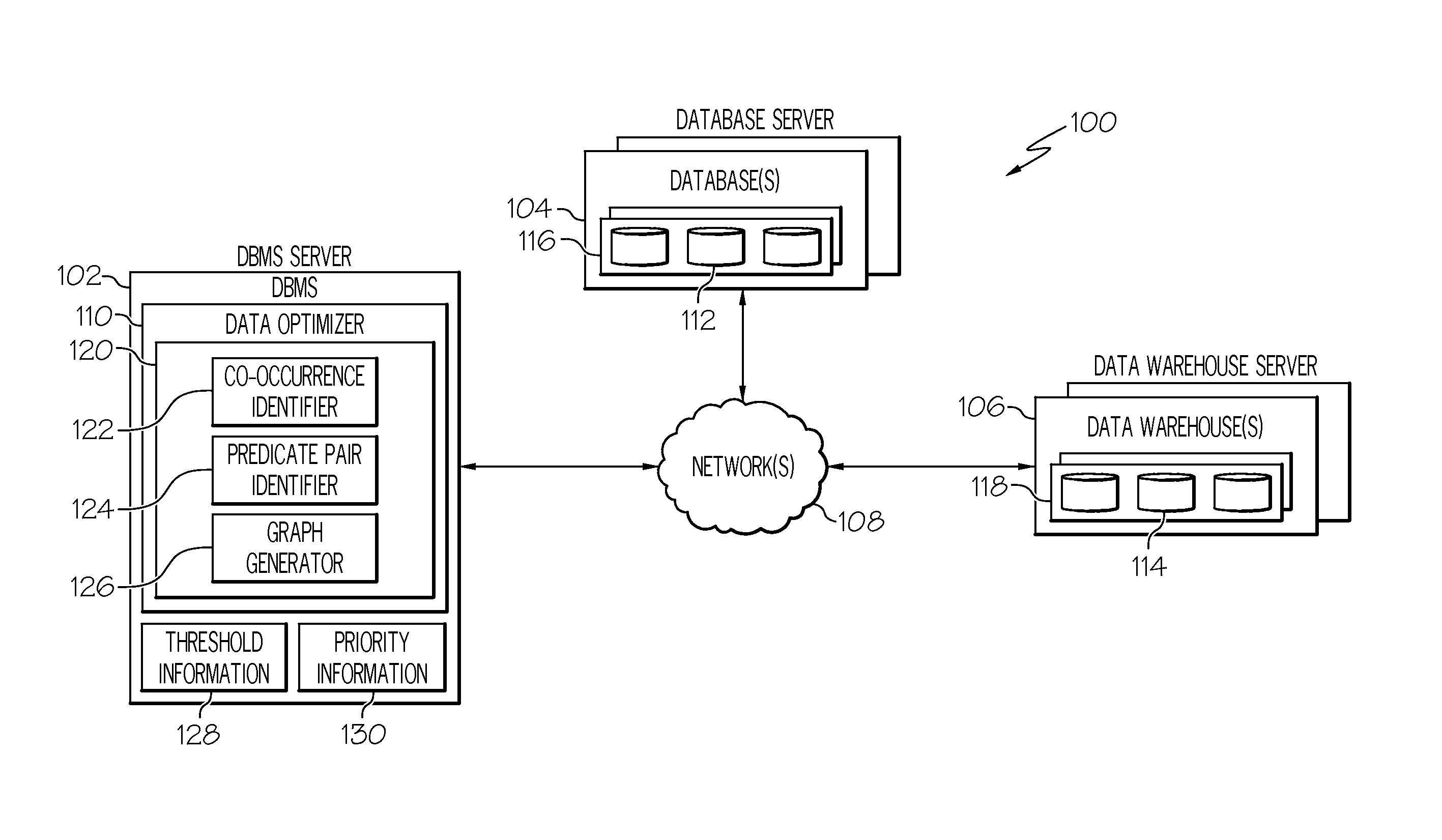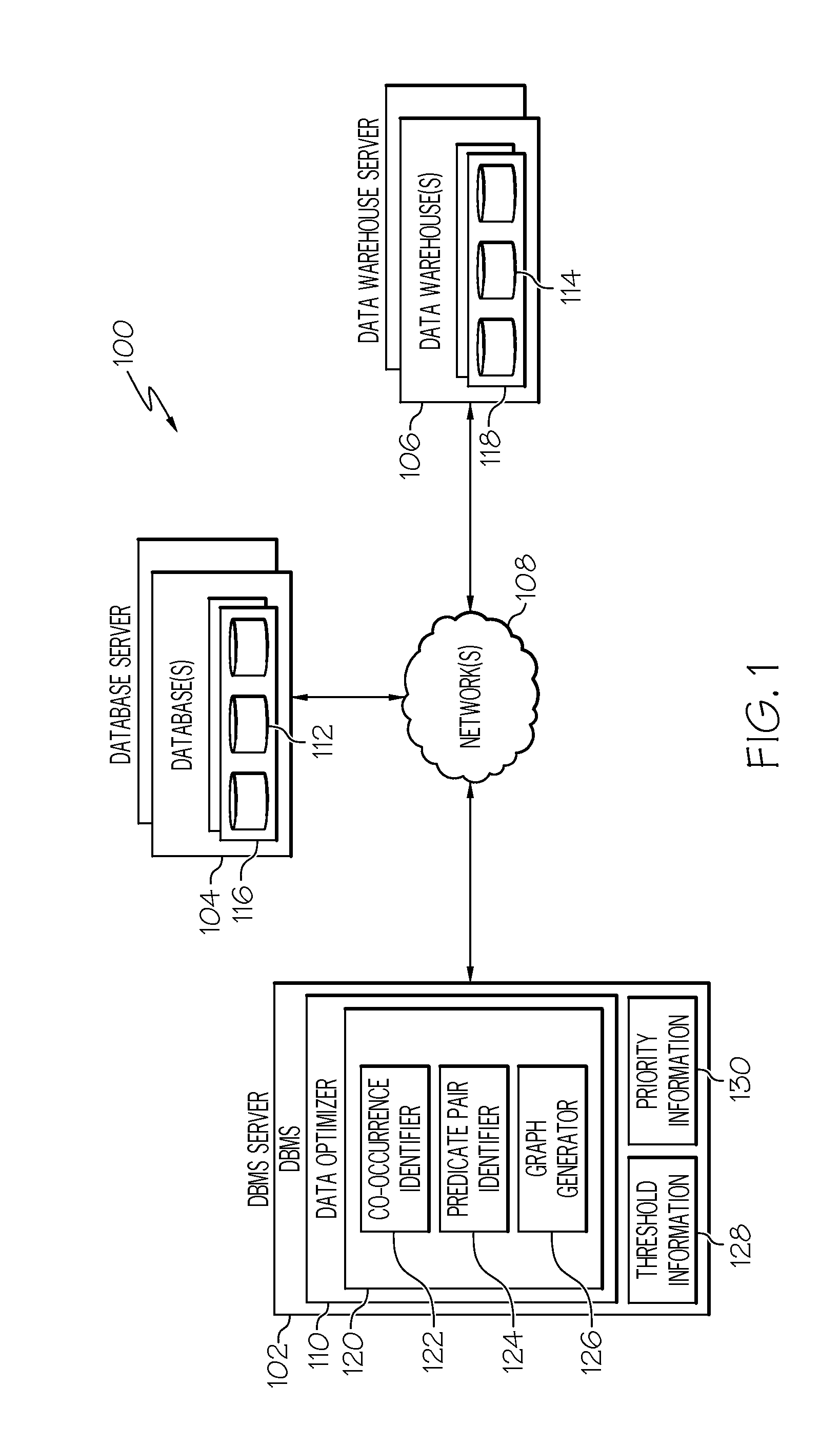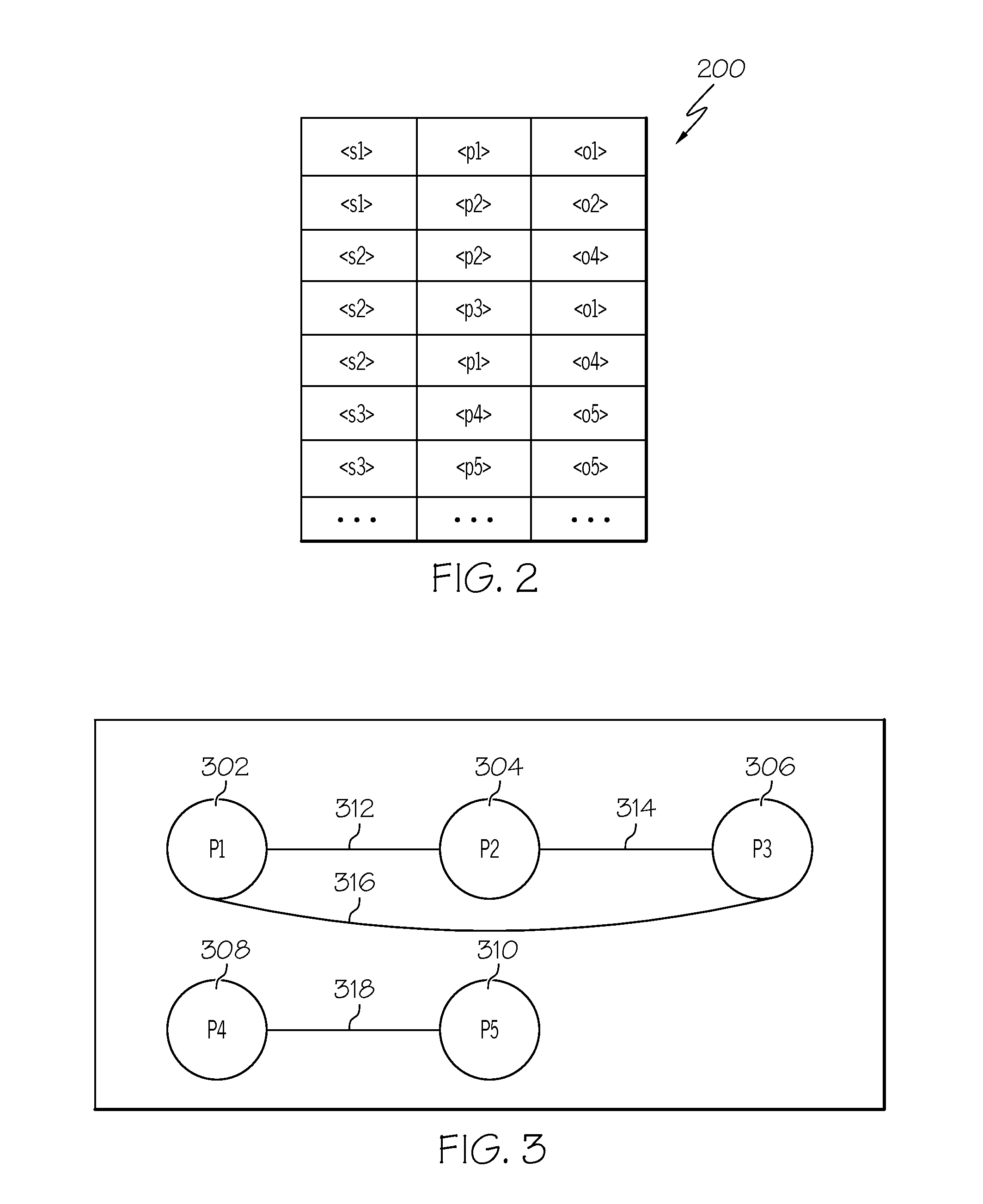Optimizing sparse schema-less data in relational stores
- Summary
- Abstract
- Description
- Claims
- Application Information
AI Technical Summary
Benefits of technology
Problems solved by technology
Method used
Image
Examples
Embodiment Construction
[0014]Operating Environment
[0015]FIG. 1 shows one example of an operating environment 100 applicable to various embodiments of the present invention. As shown, a database management system (DBMS) server 102 is communicatively coupled to one or more data storage servers 104, 106 via a network(s) 108. The network(s) 108, in this embodiment, is a wide area network, local area network, wired network, wireless network, and / or the like. The DBMS server 102 comprises a relational DBMS 110, such as, but not limited to, DB2 from International Business Machines. The DBMS 110 accesses and manages data 112, 114 stored in one or more databases 116 and / or data warehouses 118 residing on the data storage servers 104, 106. It should be noted that the databases 116 can also reside within the DBMS 110 as well.
[0016]The databases 116 and data warehouses 118 each comprise objects (not shown), which can be physical or logical, such as (but not limited to) storage containers, table spaces, tables, indexe...
PUM
 Login to View More
Login to View More Abstract
Description
Claims
Application Information
 Login to View More
Login to View More - R&D
- Intellectual Property
- Life Sciences
- Materials
- Tech Scout
- Unparalleled Data Quality
- Higher Quality Content
- 60% Fewer Hallucinations
Browse by: Latest US Patents, China's latest patents, Technical Efficacy Thesaurus, Application Domain, Technology Topic, Popular Technical Reports.
© 2025 PatSnap. All rights reserved.Legal|Privacy policy|Modern Slavery Act Transparency Statement|Sitemap|About US| Contact US: help@patsnap.com



